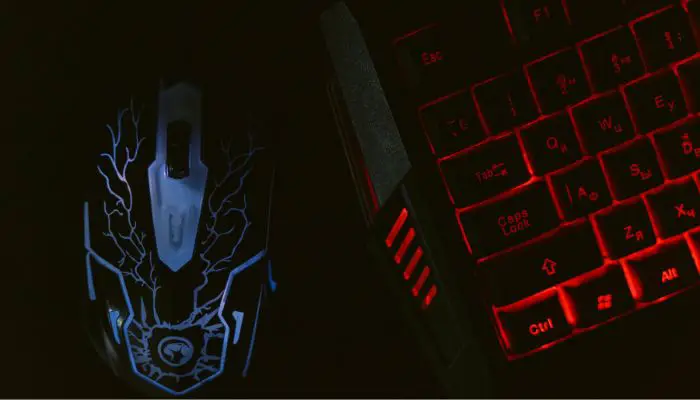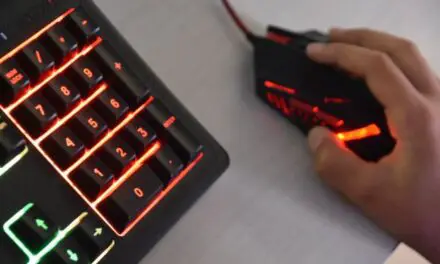There’s a reason you rarely see a hardcore PC gamer using an old wireless mouse or one from a brand you’ve never heard of. Out of all the components that have been designed for PC gaming use over the years, a wireless mouse is not one you want to scrimp on—unless the game in question is a slow-crawl RPG or something turn-based.
Many gamers avoid wireless components that aren’t known to perform when it comes to gaming, especially fast-twitch games where every millisecond counts.
Table of Contents
Does A Wireless Gaming Mouse Have A Delay?

High-end wireless gaming mice from brands like Logitech, Razer, Roccat, Pulsar, Viper, etc, are equal to wired gaming mice in terms of latency. However, an older or lesser-known wireless gaming mouse may have a delay, known as input lag, especially when compared to a traditional, wired mouse.
Input lag is essentially the amount of time it takes for the mouse to communicate your movements to the PC, where it is shown on the screen.
When it comes to competitive gaming, input lag is crucial because every millisecond counts. It’s the difference between an outstanding player and one who sits just above mediocre. A wireless mouse is capable of causing such a delay if it is old or of poor quality.
Playing offline, one-player games and tackling things like Pillars of Eternity, Divinity: Original Sin 2, Civilization VI, or basically any turn-based or slow-moving game is perfectly fine for any type of wireless mouse.
On the other hand, playing Call of Duty: Vanguard, Splitgate, Overwatch 2, or something similar, requires fast-twitch capabilities and excellent hand-eye coordination that you need to translate to the screen (in-game) as fast as humanly possible. There is no time for input lag and a wired or premium wireless mouse like the Viper V2 Pro will be needed.
Related Article: Is A Gaming Sleeve Worth It? (Explained!)
Is The Delay From A Wireless Gaming Mouse Enough To Make Me A Worse Player?
The delay from a wireless mouse could be enough to make you a worse player. If, as we mentioned above, you are in a competitive scenario where fast-twitch responses are required, a wireless gaming mouse that is not high-end may hold you back compared with using a wired mouse, effectively handicapping you in front of the competition.
A wired gaming mouse is good enough to make you feel like you’re pretty much alright in most scenarios. However, the real difference will become glaringly obvious once you enter online play and are competing with other players.
Take an FPS (First Person Shooter) for instance. It’s all fine and good when you’re mowing down NPCs and feeling pretty good about your skills. Then, competing against real people, you’ll notice that they always seem to get their shots off first and track you more accurately, even though you’ll swear up and down it was you.
The differences between a wired and a poor wireless gaming mouse become much more pronounced in competition. You’ll quickly reach the point where you wish you had gone with a regular, wired mouse. In fact, a standard, run-of-the-mill, non-gaming, wired mouse will actually be quicker.
What To Do To Reduce Input Lag From Your Wireless Gaming Mouse
Fortunately, there are a few things you can do to trim the horrible latency down just a bit. Input lag is measured in milliseconds, so you won’t be able to physically see the difference so much as feel it in the middle of the action.
- Switch to a wired keyboard and mouse
- Turn V-Sync off
- Lower in-game video graphics and settings
- Use G-Sync or FreeSync if available
Sure, the first one sounds pretty obvious but, honestly, it’s the truest and quickest way to fix the problem. Turning V-Sync off helps with input latency and those who are using wireless components will often use it. It’s not going to put you in line with wired mouse gamers, but it will narrow the gap.
Lowering graphics settings simply reduces the strain the computer is under. It may or may not help with your input lag but it’s better than doing nothing. It might help in a pinch.
If you have G-Sync (Nvidia) or FreeSync (AMD), turn them on so you avoid the potential for screen tearing that exists when you flip the standard setting of V-Sync off. It won’t reduce input lag but it will improve your graphics experience without adding additional strain on the PC.
You can also make sure you are using USB 3.0 and use a mouse pad that best suits your play style (speed or control).
Test different DPI settings to find what works for you and play around with the mouse precision settings in Windows.
Sometimes, however, if playing online, input lag can come from low network connectivity. If you think this might be the case, try moving closer to your router, closing any background websites and apps, connecting your PC directly to the router with an ethernet cable, playing on a local server, or just restarting your router.
Conclusion
If you invest in a quality wireless gaming mouse like the Logitech G502 Lightspeed, Roccat Kone Pro Air, or Razer Viper Ultimate, you won’t experience any issues with input lag.
But delay from a poor quality wireless mouse may be unavoidable and becomes truly noticeable in games where every millisecond counts. If you are aiming to be a competitive gamer in a high-speed, FPS, then you simply have to purchase a wired or high-quality wireless mouse.



